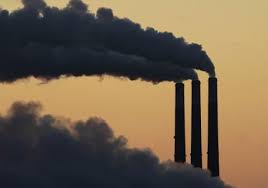In October 2018, the UN Intergovernmental Panel on Climate Change (IPCC) released its special report, calling for urgent and immediate action. It detailed how there is broad consensus among climate scientists on why the world must meet the Paris Accord’s target of an average global temperature increase not exceeding 1.5 degrees C. Otherwise, the consequences to our planet will be dire, even catastrophic. And we have only 12 years to get there.
This last statement has been widely misinterpreted by almost all of us. We’ve taken it to mean that we have 12 years to act. Now, over a year later, most of the world continues to behave as though the status quo still holds. But in truth we don’t have 12 years to act. In order to get to our target in that time, we have to act now. And given that we’ve squandered much of the last year and a half, what have we got now? It’s probably not 11, because the longer action is delayed, the more your window closes. Maybe we’ve got 10, or 9.
In a way, it doesn’t matter whether it’s 9, 10 or 11. The number that really matters is 0, because that’s how much time we have to adjust our level of urgency. Given that we don’t have any kind of consensus on which series of steps would even get us to our target, the time to recognize that we are in a legitimate life-threatening emergency, is now. The longer we wait, the greater the probability that the window of opportunity will have closed forever.
So we don’t have years; we have months.
To illustrate, consider the fact that carbon takes a very long time to be removed from the atmosphere by natural processes. Even if we were to cut emissions to zero today, the carbon already there will continue to act on the greenhouse effect for many decades, even centuries, to come. Meeting our 1.5 degree target means, at a minimum, cutting carbon emissions to nearly half of what they were in 2010, and to do it by 2030. At this point, emissions continue to rise. That’s a climate emergency.
But I would argue that the situation is even more alarming than that. And it’s because of tipping points or, more precisely, not knowing where those tipping points are. Consider what we’ve witnessed in our oceans over just the last few years.
The oceans absorb up to 93% of the excess heat which would otherwise go into the atmosphere. And the effects are becoming dramatic. In the last 3 – 4 years, we’ve seen an acceleration in the warning signs that we may be nearing the tipping points (if we haven’t crossed them already). Increased acidification, a rapid bleaching and die off of choral reefs, interference in the reproductive cycles of fish. Changes in the oxygen content of the water and massive effects on fish. Changes to the salinity of the water due to faster than expected melting of polar ice. What is most concerning is how we’re now seeing cascade effects, as one factor accelerates the pace in others.
How do we know if and when these processes have effectively run away from us? I suggest we don’t wait to find out.
Cetaceans cannot thrive, or even survive, unless we can protect the health of the oceans. Of course, it’s much more complicated than just protecting this one piece. The problem is much bigger – with the environment, everything is connected, and all of us are affected. Whales, fish, terrestrial animals, insects, people.
I think what’s most important now is for every country to act as if its actions are crucial to the whole, and hope that the example it sets inspires other nations to do the same. We will continue to urge our own governments here in Canada to take action, but whether a display of leadership starts here, or in Sweden, or Germany, or Bhutan, it doesn’t really matter to us. The world needs someone to act as the catalyst, and in short order we all need to re-double own own efforts.
Anna, Canadian Cetacean Alliance



Leave a Reply